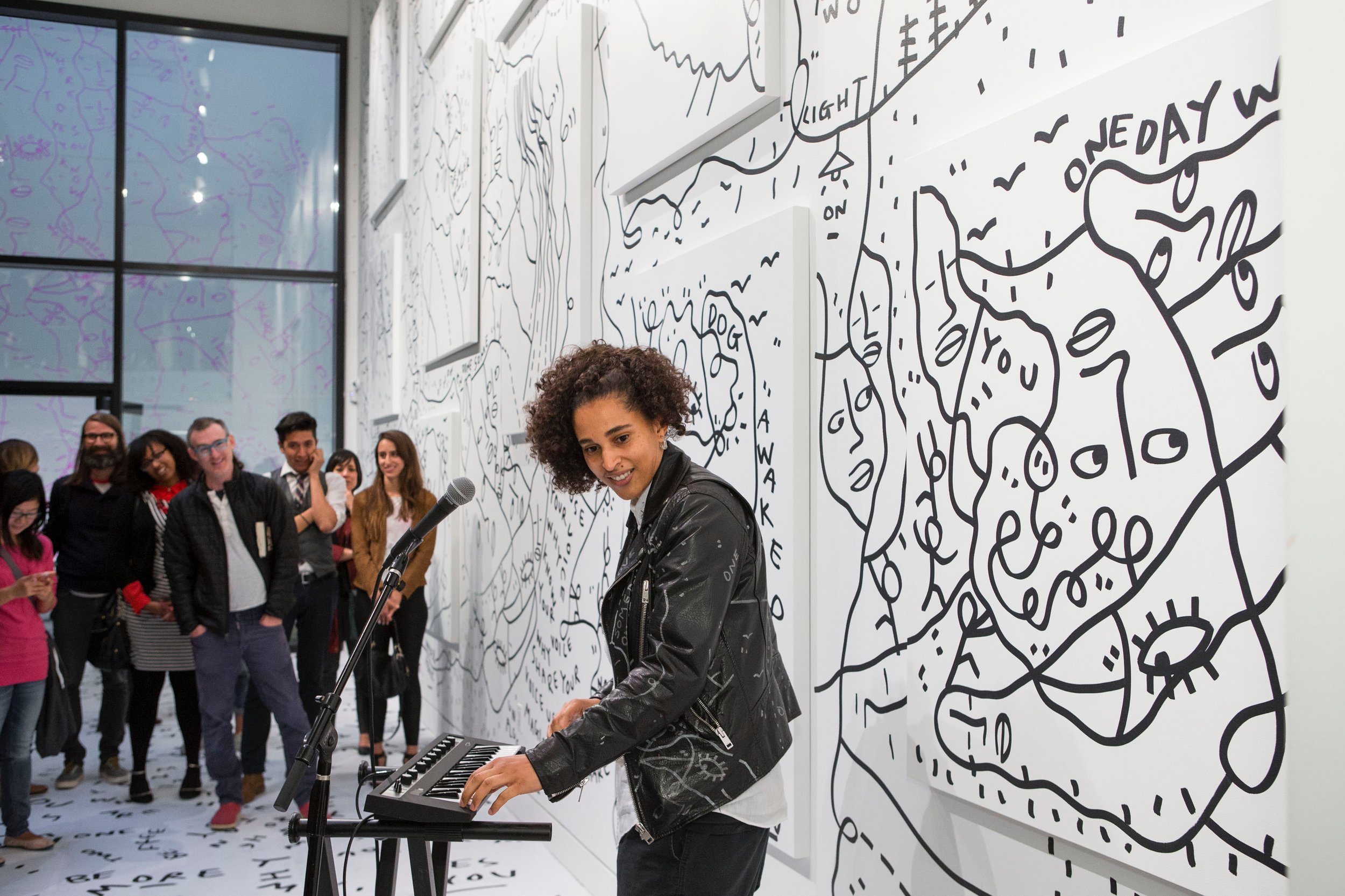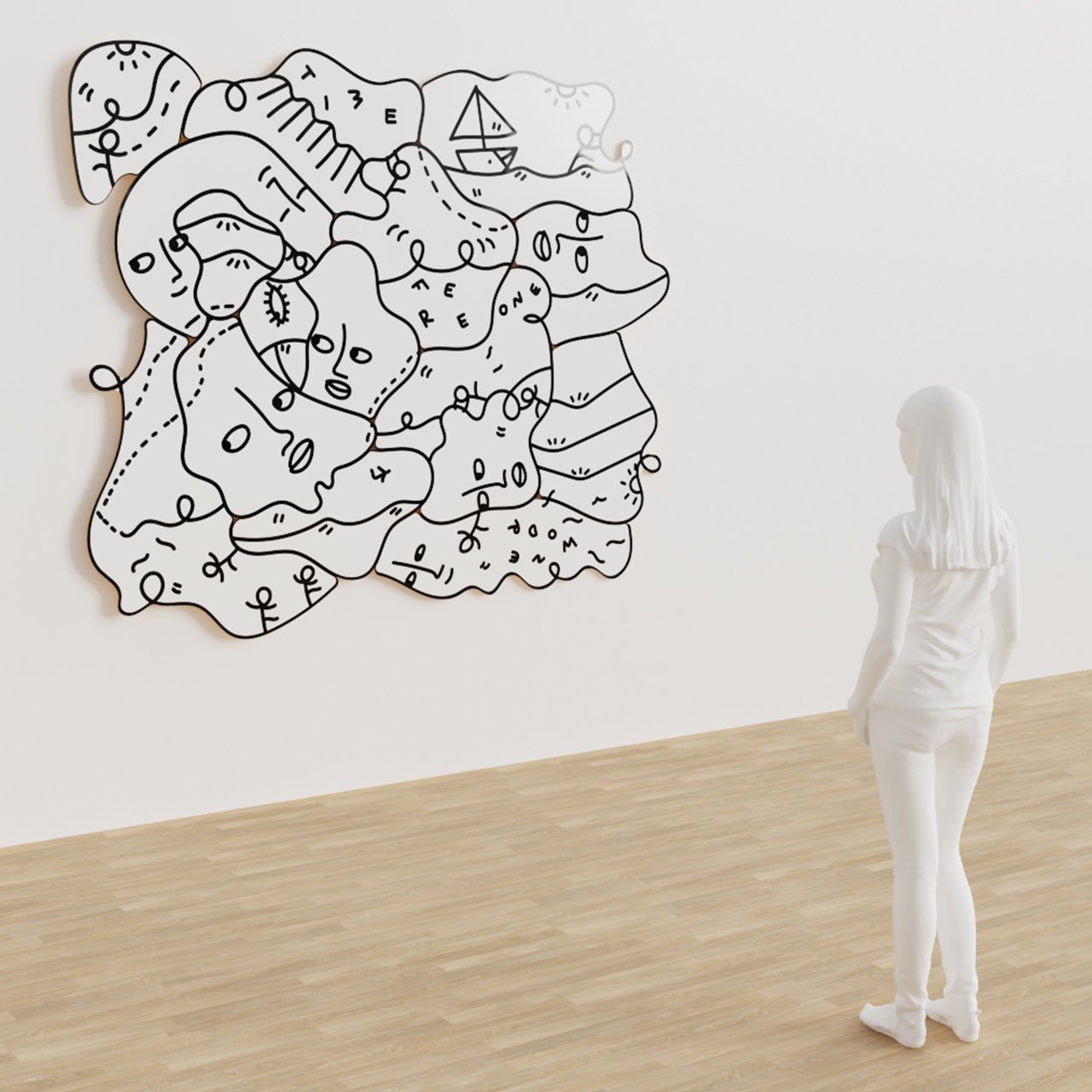A Regarded Conversation with Shantell Martin
Photo Credit: Michelle Mosqueda
Shantell Martin is one of today’s most groundbreaking multimedia artists. Known for her ongoing exploration of the vast potential of the spontaneous hand-drawn lines, below the surface of her signature black and white drawing is an exploration of the reciprocal relationship between artist and viewer, in which a work of art is more than an object of admiration. Exploring themes such as intersectionality, identity, and play, Shantell is a cultural facilitator, forging new connections between fine art, education, design, philosophy, and technology.
Simultaneously with her work as a fine artist, exhibiting at institutions such as Albright-Knox, the Museum of Contemporary African Diasporan Arts, and MoMa, Shantell’s practice continuously pushes the boundaries of creative expression through thoughtful, innovative collaborations with artists, brands, and cultural institutions such as Pulitzer Prize-winning performance artist Kendrick Lamar, acclaimed designer Kelly Wearstler, the New York City Ballet, Tiffany & Co., and Nike. Shantell is also fascinated with the relationships between storytelling, visual art, and technology. She is an adjunct professor at NYU Tisch ITP (Interactive Telecommunications Program) and completed a two-year tenure as a Visiting Scholar at MIT Media Lab, where she worked with the social computing group to use drawing as a medium to explore the interaction of social processes with physical spaces.
I had the pleasure of asking Shantell about how her time in Japan influenced her, how can drawing help set her free, how dancing is poetic, and so much more.
UZOMAH: What made you first want to become an artist?
SHANTELL: Exploring my creativity has been a lifelong journey. Through that journey, I’ve experimented with different mediums, searching for my line. I don’t know if I ever decided that I wanted to be an artist; in a way, it’s always been within me. I’ve just continued to put one foot in front of the other each day, and some might say that I’m an artist.
U: What about philosophy intrigues you the most?
S: What intrigues me the most is how simple it is at its root. It’s just making observations and asking questions, which is a practice we all do daily.
Shantell Martin x Amref Health Africa, Photo credit: Joseph Krauss
U: How did living in Japan, performing, and being a visual jockey help you develop your drawing skills through "liveography"?
S: It gave me a very strong foundation in that it allowed me to draw for hours and hours and hours with a single stream of consciousness in front of an audience. It really allowed me to become confident in myself and my line. It gave me the practice to be in front of people and get out of my own headspace.
U: How does using black and white colors help bring the use of language to your performance art where words also are performers?
S: I feel like words and lines are the same thing. When you are drawing with black and white, there is more emphasis on the lines being drawn vs. when they are written. This gives us a different opportunity to engage with them, especially when they unfold and are presented in real-time during a performance.
U: In March 2022, "KITES" was your first choreographed ballet at the Boston Ballet. How did that come together?
S: Yes, so this was in collaboration with the Boston Ballet at the Boston Opera House. Prior, I had been speaking with them for a few years about working together. I even hosted one of their ChoreagrapHER evenings. It was a long conversation in the works. While I had not done any choreography before, in 2019, I worked with the New York City Ballet and took over the promenade at the Lincoln Center, and opened up some of the artist evening series on stage. I think from there it led to a natural conversation with the Boston Ballet.
Photo Credit: Chandran Gallery
U: In 2016, Martin collaborated with Kendrick Lamar for a 75-minute performance at Art Basel in Miami. What was it like to collaborate with Kendrick? Would you do something similar in the future?
S: For me, it was a really incredible experience. It’s really nice to see someone from a different industry and in a different medium and observe the ways that they create and make – which in this instance was similar to the way I make and create. We had worked together on a video in the past. I love creating live visuals and would love to do this again. Afterward, I did a few things for Lizzo, which was a bit of a different setup, but absolutely, I would love to do this again.
Photo credit: Micheal Ferraro & Conor Coghlan
U: How does drawing set you free?
S: Drawing can set you free, and there’s a reason why we are all given this gift as children. I elaborate more in my 2020 Ted Talk.
U: As a person of color and queer, what is the most significant misrepresentation you have experienced in life and the art world?
S: People make assumptions and generalizations without a conversation first.
Shantell Martin x Asteroids Photo credit: Polycade
U: How is dancing a form of poetry?
S: Dancing is creating lines, lines from the body, movement. Lines themselves - that’s what poetry is.
U: What is next?
S: More live performances!
For more information about Shantell’s artwork and latest projects, please visit her site. You can also follow her on Instagram, Twitter and find her and her art on YouTube.




